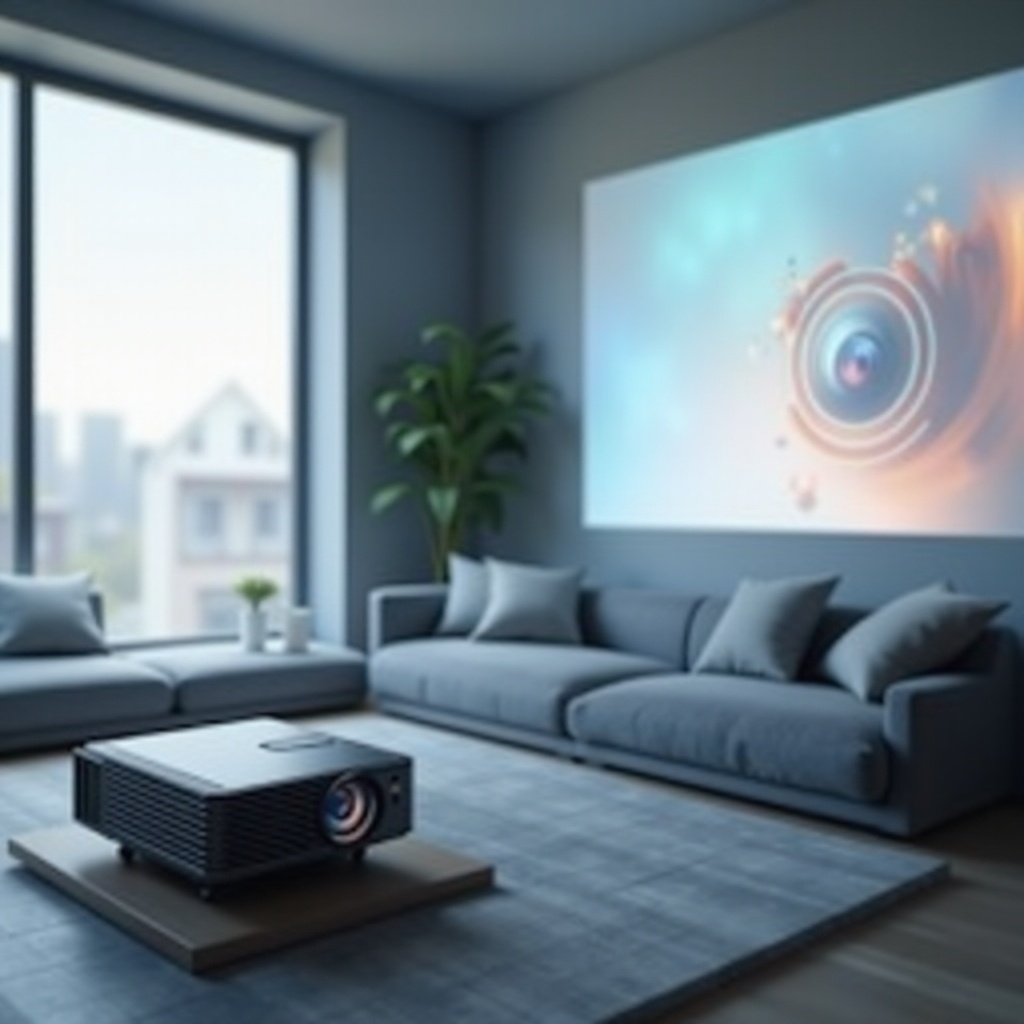Introduction
Short throw projectors have revolutionized the way we experience visuals. Unlike traditional projectors, these devices require minimal space to project large images. Whether for home theaters, gaming, or professional presentations, short throw projectors are gaining popularity due to their adaptability and high-quality output.
Understanding the benefits and features of short throw projectors is essential for making an informed purchase. This blog provides an in-depth look at the top-rated models for 2024, their key features, and the considerations to keep in mind while buying one. From compact spaces to large screen expectations, short throw projectors offer a blend of convenience and performance that’s hard to beat.

What is a Short Throw Projector?
A short throw projector is designed to project large images from a short distance. Traditional projectors require more space between the projector and the screen. In contrast, short throw projectors can produce a 100-inch image from just a couple of feet away. This feature makes them ideal for small rooms and spaces where positioning flexibility is a bonus.
The technology behind short throw projectors involves advanced lens and mirror systems that manipulate light to create large images from short distances. The ability to place the projector close to the screen minimizes shadow interference and width constraints, offering a clearly defined and immersive viewing experience. Given these advantages, learning how to pick the right model is crucial.
Key Features to Consider in 2024
When selecting a short throw projector, several features stand out in 2024:
- Brightness (Lumens): Measured in lumens, brightness determines how well the projector handles different lighting conditions. A higher lumen count ensures clear, vivid images even in ambient light.
- Resolution: For a crisp and detailed image, consider projectors with at least 1080p resolution. For more detailed visuals, 4K projectors are becoming increasingly popular.
- Contrast Ratio: This ratio indicates the difference between the darkest blacks and the brightest whites the projector can display. A higher contrast ratio results in richer and more dynamic images.
- Connectivity Options: Modern projectors come with various input options like HDMI, USB, and wireless connectivity. This versatility is crucial for connecting multiple devices such as gaming consoles, laptops, and streaming devices.
- Throw Ratio: This determines the size of the image based on the distance between the projector and the screen. Shorter throw ratios are preferable for smaller spaces.
- Sound Quality: Integrated speakers may vary in quality, but also check for audio output options to connect external sound systems for a more immersive experience.
- Keystone Correction and Lens Shift: These features help adjust the image to be perfectly rectangular, regardless of the projector’s angle or placement.
By focusing on these features, you can avoid common pitfalls and select a projector tailored to your usage needs, whether it’s for gaming, movie nights, or professional presentations.
Our Top Picks for 2024
Projector 1: Overview, Pros, and Cons
Overview: The [Brand X] ProHD45 offers premium 4K resolution with a brightness of 3200 lumens. It has versatile connectivity options including HDMI, USB, and Bluetooth.
Pros:
– Exceptional picture quality with 4K resolution
– High brightness suitable for various lighting conditions
– Multiple connectivity options
Cons:
– Slightly expensive compared to 1080p models
– Larger size may not suit ultra-compact spaces
Projector 2: Overview, Pros, and Cons
Overview: The [Brand Y] Cinema1000 is a 1080p projector with a throw ratio of 0.5, making it perfect for small rooms. It features built-in speakers and a user-friendly interface.
Pros:
– Affordable pricing
– Excellent throw ratio for small spaces
– Easy setup and operations
Cons:
– Lower resolution compared to 4K models
– Built-in speakers may not provide premium audio quality
Projector 3: Overview, Pros, and Cons
Overview: The [Brand Z] EntertainmentXL offers a brightness of 2800 lumens and native 4K resolution. It features HDR support for enhanced color accuracy and vibrancy.
Pros:
– High resolution and brightness
– HDR support for superior color accuracy
– Sleek design
Cons:
– Limited connectivity options
– More suited for darker environments
Projector 4: Overview, Pros, and Cons
Overview: The [Brand A] GamingProUltra is a gamer’s dream with a high refresh rate, 1080p resolution, and low input lag. Connectivity options include HDMI and USB.
Pros:
– Optimized for gaming with low input lag
– High refresh rate for smooth visuals
– Compact and portable design
Cons:
– 1080p resolution may not suit users wanting 4K
– Brightness not ideal for highly lit environments

Comparing the Top Models
To decide the best projector among the top-rated ones for 2024, consider your specific needs:
- For High-Resolution Needs: The [Brand X] ProHD45 and [Brand Z] EntertainmentXL excel with their 4K resolution.
- For Small Spaces: The [Brand Y] Cinema1000 stands out with an impressive throw ratio, making it perfect for compact areas.
- For Gaming: The [Brand A] GamingProUltra, with its high refresh rate and low input lag, is the best choice for gamers seeking competitive edge.
Each model serves different purposes and combines varying features tailored to unique requirements. Your decision should align with your primary usage scenario.

Conclusion
Choosing the right short throw projector involves balancing between resolution, brightness, and specific usage needs. With our comprehensive guide, you can make an informed decision and enjoy an enhanced viewing experience in 2024.
Frequently Asked Questions
What is the ideal distance for a short throw projector?
Short throw projectors typically project large images from distances ranging from 3 to 8 feet from the screen.
Are short throw projectors suitable for gaming?
Yes, projectors like the [Brand A] GamingProUltra are optimized for gaming with low input lag and high refresh rates.
How do I maintain my short throw projector?
Regularly clean the lens and air filters, ensure proper ventilation, and update software when available for optimal performance.

